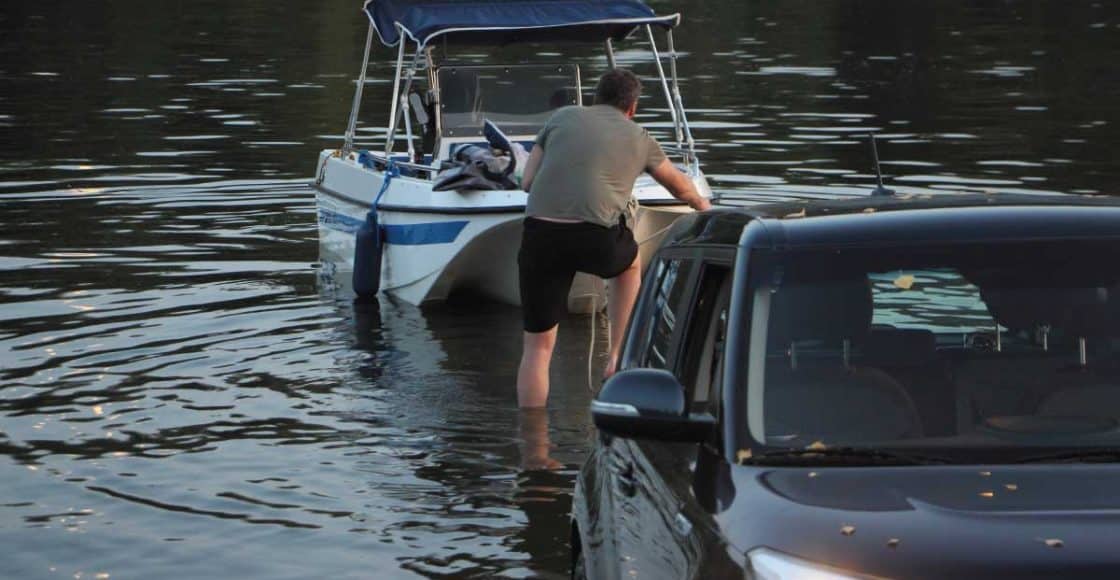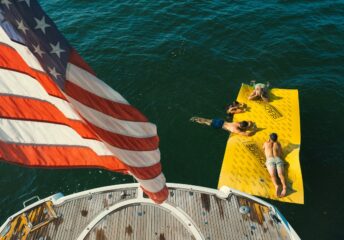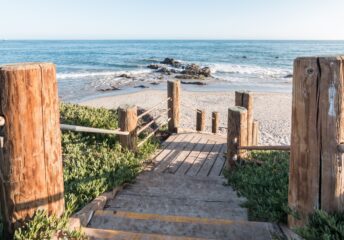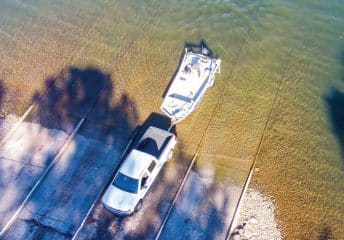Launching a Boat: Step-by-Step Guide
Last Updated on January 11, 2024 by Boatsetter Team
Learning how to launch a boat or personal watercraft (PWC) is key to expanding your boating skills. Once you know how to back up a boat trailer and properly launch your vessel, you’ll be able to use your boat on any body of water serviced by a ramp.
Follow these 10 steps when learning how to launch a boat:
- Inspect the ramp and dock; check out the conditions and how deep the water is.
- Always check (and double-check) that the drain plug is installed.
- Load all your gear in the boat while parked off to the side in a “staging area” before heading to the ramp.
- Attach your fenders and docking lines to the dock side of the boat.
- Check that the key is in the ignition; ensure that you don’t have a dead battery.
- Remove the transom tie-down straps and outboard motor brace (if necessary).
- Unplug the trailer lights to keep the cold water from damaging the hot bulbs.
- Back down the ramp until the trailer tires touch the water and you see the stern float.
- Set your parking brake, then get out to remove the safety chain and release the trailer winch.
- Either by yourself or with a helper, give the boat a little push to nudge it off the trailer.
Own a boat? Did you know you can make $20K or more per season renting it out?
Consider making your first launch attempt on a weekday when the ramp is not going to be too busy. Then you won’t feel pressured to do everything in a hurry. There may be a small fee for launching, so take care of that as soon as you arrive.
Be sure to consult our other launching and towing guides to ensure you’re best equipped for your experience heading to and from the launch ramp:
- How to Back Up a Boat Trailer
- Choosing the Right Tow Vehicle
- How to Load a Boat on a Trailer (Retrieving Your Boat)
Read on for further instructions on how to properly complete each of these steps, and find additional tips on how to launch a boat by yourself.
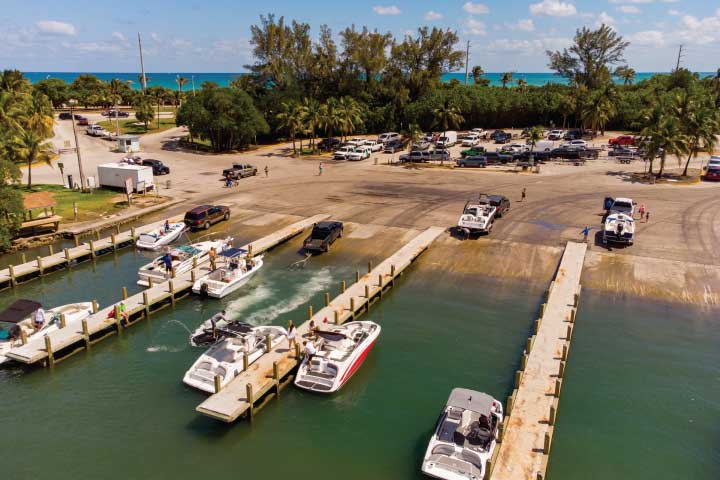
Inspect the Launch Ramp
Before launching at an unfamiliar ramp, it can be helpful to first inspect the ramp. This way you’ll know how steep the ramp is, how deep the water seems to be, and the condition of the dock.
You can also observe the flow of traffic around the ramp, and decide where to park the vehicle and trailer after you launch.
Practice Good Boat Ramp Etiquette
It’s good etiquette to be as efficient as possible when launching.
Park in a staging area out of the way of others who are launching, and get your boat ready.
- Once your boat is packed and ready, head back to the ramp to begin backing up your trailer down the ramp.
- As mentioned, you should back until the trailer tires touch the water and then see if the stern of the boat is deep enough to start to float.
- If not, back down a little more until that happens. Put the vehicle in park and set the parking brake.
Once your tow vehicle is in park, you can get out and remove the safety chain from the bow eye, and release the trailer winch so the strap goes slack and you can unclip it from the bow eye.
Depending on the ramp and your tow vehicle, you may or may not be able to release the boat without standing in the water. Best to wear footwear that can get wet or boots.
Pro Tip: After launching the boat, observe the water level relative to the trailer wheels. When it’s time to load the boat back on its trailer, you’ll know exactly how far to back into the water.
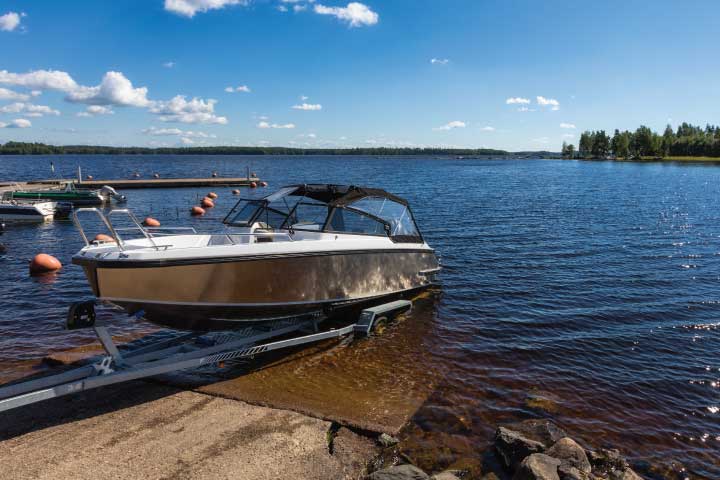
Floating the Boat Off the Trailer
Hand the bow line to a helper (and the stern line if it will reach) and give the boat a little push. It should float and slide off the trailer. If not, you’ll need to back in a little further.
- Your helper can now hold the lines and walk the boat down the dock until it is clear of the trailer.
- If the helper also holds the stern line, the boat won’t swing out into the launch area.
- Walk the boat as far down the dock as possible to get out of the way of the next party waiting to launch.
Driving the Boat Off the Trailer
If your helper can operate the boat (or park the vehicle and trailer), an alternate plan is for one person to be in the boat as it’s backed down the ramp.
- Lower the outdrive or outboard after the boat is in the water and start the engine before releasing the bow eye.
- Now you can float the boat off the trailer and your helper can power the boat out of the way of the busy ramp.
- As soon as the boat is free, move the vehicle and trailer out of the way, park, and return to the dock and the boat.
- Have your helper pick you up at the dock after the vehicle is parked.
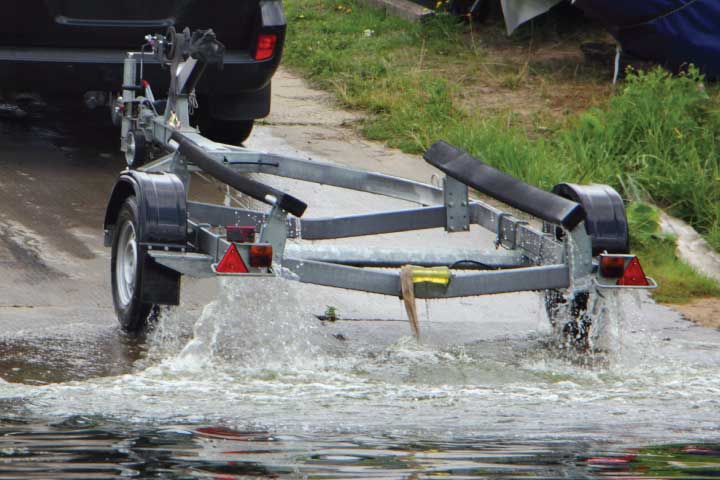
Launching a Boat by Yourself
To launch a boat by yourself, follow the same routine up to the point of releasing the boat. If there’s a dock at the ramp, it typically helps to back the trailer down as close to the dock as possible.
One way to launch is to attach a single line long enough to be secured to both the bow and stern cleat.
- Back down the ramp and push the boat off the trailer while holding the line.
- Once the boat is free use the trailer as a step and hop onto the dock.
- Use the single line to control the boat and walk the boat down the dock.
- Secure the boat to the dock, park the vehicle, and you’re ready to go.
This method works when the dock is low and easy to reach.
If that’s not the case, try this instead…
- Secure a long line (about 25 feet) to the bow cleat.
- Coil the line and place it on the bow of the boat.
- Then, tie the other end to the trailer.
- Back down and release the boat or just let it float off the trailer.
- Then drive up the ramp a few feet, park, and go back to the trailer.
- Untie the line. Because you’ve got plenty of lengths, you should be able to walk over to the dock and pull the boat up to the dock and secure it.
This method also works at remote ramps with no dock!
Boatsetter is a unique boat-sharing platform that gives everyone—whether you own a boat or not—the chance to experience life on the water. You can list a boat, book a boat rental or experience, or make money as a captain.
Start offsetting the costs of boat ownership as soon as you list with Boatsetter!

Charles Plueddeman is a self-employed writer and photographer based in Wisconsin. A staff editor and contributor to Boating Magazine since 1986, he is the author of its “Off My Dock” column. In the marine realm he specializes in engine technology and trailerable boats. His editorial work has appeared in many national publications, including Popular Mechanics, Men’s Journal, Playboy, Popular Science, Cycle World, and Harley-Davidson Enthuisast.
